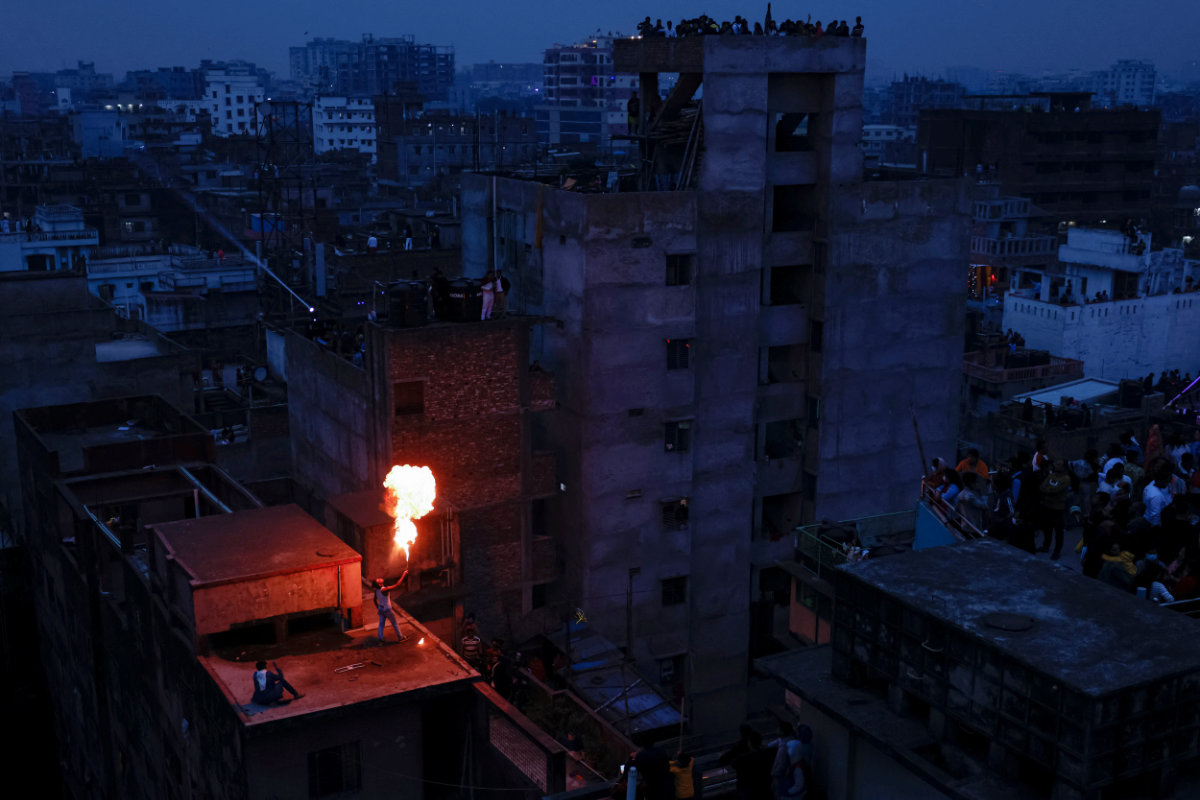DHAKA: Residents of Dhaka on Friday celebrated Shakrain, a centuries-old boisterous festival of kite-flying, despite the cancelation of official events due to a surge in COVID-19 cases.
Kite-flying has long been a passion in South Asia and Shakrain transforms Dhaka’s skies into a glittery kaleidoscope of hundreds of thousands of kites.
The festival observes the end of Poush, the ninth month of the Bengali calendar, to mark the beginning of the harvest season.
The annual event, which in the evening also features fireworks and fire-breathing performances, usually involves numerous events organized by city authorities. But this year, as the city endures a rapid omicron variant-fueled COVID-19 surge, all celebrations have been held in private.
Akand Mohammad Faisal Uddin, chief social welfare officer at Dhaka South City Corporation, told Arab News that the official events have been canceled “considering the people’s health and safety.”
But Dhaka residents, especially young people, say that they could not imagine a year passing without seeing the colors of Shakrain — a source of happiness and pride.
Sharmin Rahman Dipti, a 12th-grade student who lives in the old part of southern Dhaka, where colorful kites are flown high from the rooftops and kite-flyers indulge in duels, said that she “always looks forward” to the festival.
“I love to watch the people flying kites and competing with others over control of their kites. Everyone in our society loves this kite-flying,” Dipti added. “Not many cities in the world have this type of tradition and I am proud of being a part of this festival.”
Arafat Rahman, a university student and also a Dhaka native, has taken part in Shakrain kite duels for as long as he can remember.

A man performs fire breathing on their rooftop during Shakrain Festival in Dhaka, Bangladesh, on January 14, 2022. (REUTERS/Mohammad Ponir Hossain)
“I have been participating in the kite festival from my childhood. Every year, we have kite-flying competitions among friends,” he told Arab News. “I spent about $10 to prepare colorful kites and apparatus this year.”
During fights, kites are flown with thick strings or sharp wires, sometimes reinforced with chemicals so that they can better attack opponents’ kites, slice their strings and release them into the air.
The festival is not only about color, performance and competition, Muntasir Mamoon, a history professor, said. “It also plays an important social role in the Bangladeshi capital.”
He added: “In the early 20th century, it became very popular among the people of Dhaka, and they adopted it as a part of culture.
“People, irrespective of class, caste and religion participate in this festival, which increases communal fraternity.”
Renowned cultural activist Nasiruddin Yousuf told Arab News that Shakrain used to be held by kings and royals to entertain the community during the harvest season. Kites were added much later, but are now the central feature of the festival.
“People exchange the joy of life through Shakrain,” Yousuf said. “It has become a part of our tradition and we need to nurture it.
“This type of event helps in creating a unique identity.”


























